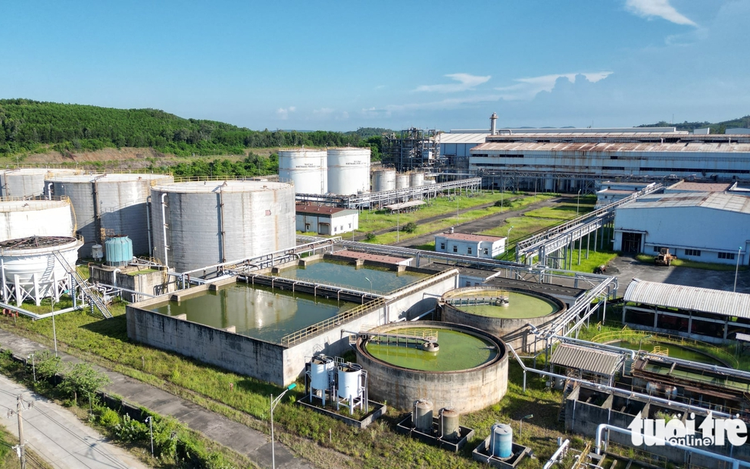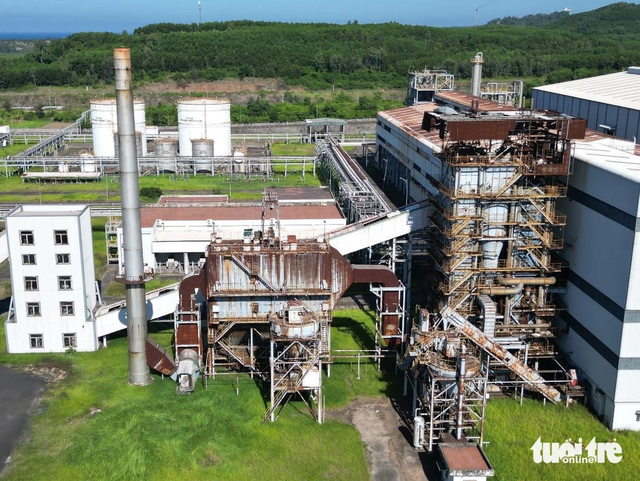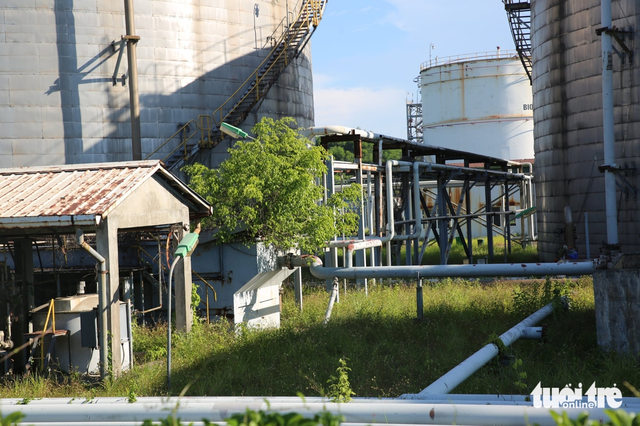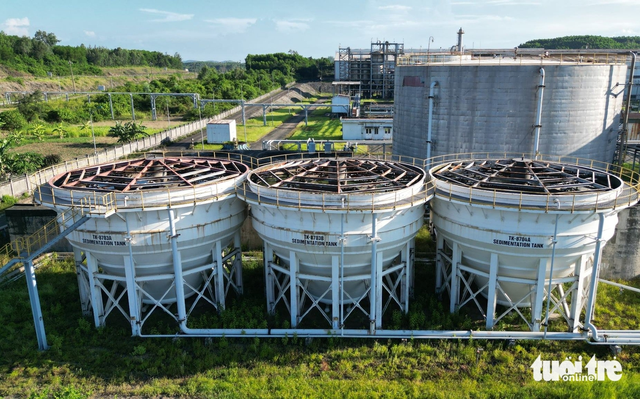
Dung Quat Biofuel Plant in Quang Ngai Province, central Vietnam has deteriorated after more than a decade of inactivity. Photo: Tran Mai / Tuoi Tre
The current Quang Ngai Province is a merger of the former Quang Ngai Province and neighboring Kon Tum Province, effective from July 1, as part of a recent major administrative restructuring in which Vietnam’s total number of provinces and cities was reduced to 34 from 63.
The restart of the Dung Quat Biofuel Plant is a promising development as the plant, spanning more than 24 hectares in the Dung Quat Economic Zone, has stood idle and deteriorating over the past ten years.
Resumption road map
According to the Central Petroleum Biofuel Joint Stock Company, which manages the plant, a detailed plan for resuming operations has been laid out.

The desolate, deteriorated condition of the Dung Quat Biofuel Plant in Quang Ngai Province, central Vietnam. Photo: Tran Mai / Tuoi Tre
Equipment repairs and upgrades will be completed in July and August 2025. Technical start-up is scheduled for September, followed by trial runs in October, and commercial production will commence in November.
The project is jointly funded by the company and its partners, ensuring safe and stable operations.
Additionally, the plant’s CO2 recovery system capacity will be expanded by 40–50 metric tons per day to enhance economic efficiency.
In line with Vietnam’s net-zero commitment by 2050 and the compulsory E10 fuel use starting January 1, 2026, PetroVietnam and Binh Son Refining and Petrochemical Joint Stock Company (BSR) have prioritized the revival of ethanol plants, including Dung Quat.
BSR sees this as a vital component of its green transformation strategy through 2030, with a vision extending to 2045.
Currently, the domestic ethanol production capacity stands at approximately 450,000 m³ per year, meeting less than 40 percent of the required 1.2–1.5 million m³ for E10 blending. The remainder must be imported amid fluctuating global ethanol prices.
Therefore, bringing the Dung Quat plant back online is not only an economic solution but also crucial for energy security and reducing greenhouse gas emissions in the transportation sector—the country’s largest emitter.

Wild grass has overrun the Dung Quat Biofuel Plant in Quang Ngai Province, central Vietnam. Photo: Tran Mai / Tuoi Tre
In August, BSR will begin the trial blending of E10 gasoline at the Dung Quat Oil Refinery and distribute the product to central provinces. This step aims to establish a complete supply chain from ethanol production to market distribution of biofuel.
The resumption of the Dung Quat Biofuel Plant is expected to mark a significant milestone in advancing sustainable development and the circular economy, pushing Vietnam’s energy sector closer to global green standards.
A decade of inactivity
The Dung Quat Biofuel Plant project was launched in 2009 in the Dung Quat Economic Zone.
It was one of three major ethanol fuel production projects initiated by PetroVietnam, with a total investment exceeding VND2.2 trillion (US$84.1 million) and a design capacity of 100 million liters per year, using dried cassava chips as feedstock.

Some equipment has been abandoned for a long time, requiring major repairs. Photo: Tran Mai / Tuoi Tre
The plant aimed to supply ethanol for E5 biofuel blending, supporting Vietnam’s renewable energy goals.
However, after construction was completed and trial operations began in 2012, the facility soon faced financial losses due to high feedstock costs and a sluggish domestic ethanol market.
Although the plant briefly operated commercially in 2014, it was fully shut down in 2015 and remained inactive.
In 2018, PetroVietnam transferred the management of the project to BSR, which explored solutions for resuming its operations, including equipment maintenance and market development.
Despite these efforts, the plant remained offline due to infrastructure deterioration and market constraints.
Today, the facility still stands abandoned in the Dung Quat Economic Zone.


Max: 1500 characters
There are no comments yet. Be the first to comment.